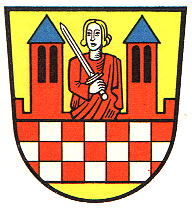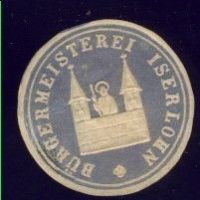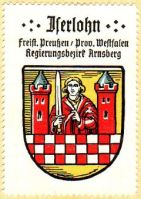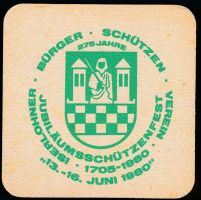Iserlohn: Difference between revisions
Knorrepoes (talk | contribs) |
Knorrepoes (talk | contribs) m (Text replacement - "Literature :" to "'''Literature''':") |
||
| Line 30: | Line 30: | ||
</gallery> | </gallery> | ||
[[Civic Heraldry Literature - Germany|Literature]] : Stadler, 1964-1971, 8 volumes. | [[Civic Heraldry Literature - Germany|'''Literature''']]: Stadler, 1964-1971, 8 volumes. | ||
{{media}} | {{media}} | ||
Revision as of 13:05, 9 September 2022
This page is part of the German heraldry portal Deutsche Wappensammlung |
Heraldry of the World |
|
German heraldry:
|
Selected collector's items from Germany:
|
ISERLOHN
State : Nordrhein-Westfalen
District (Kreis) : Märkischer Kreis (until 1972 a Urban District (Kreisfreie Stadt))
Additions : 1975 Amt Ergste (partly), Hennen, Ihmert, Kesbern, Letmathe (1956 Amt Oestrich, Lössel, Oestrich), Sümmern (partly)
| German | |
| English | No blazon/translation known. Please click here to send your (heraldic !) blazon or translation |
Origin/meaning
The arms were officially granted in 1913.
The oldest coins of Iserlohn date from the early 13th century and show a city wall with three towers. Later that century the middle tower was replaced by St. Pancratius, the patron saint of the city. In the early 14th century this composition was placed on the seal. In the 16th century the composition was placed in a shield to form the present arms. The chequered bar below the city wall is derived from the arms of the Counts of the Mark, who founded the city.
The arms by Hupp in the Kaffee Hag albums +/- 1925
Literature: Stadler, 1964-1971, 8 volumes.
Contact and Support
Partners:
Your logo here ?
Contact us
© since 1995, Heraldry of the World, Ralf Hartemink 
Index of the site















